The Role of Light Therapy for Seasonal Depression and MS
Introduction
Living with Multiple Sclerosis (MS) often means dealing with physical, cognitive, and emotional challenges. For many people with MS, these challenges intensify during the winter months—when seasonal affective disorder (SAD) adds another layer of fatigue, sadness, and low energy. The gray skies and shorter days don’t just affect mood; they can worsen MS-related symptoms like depression, sleep disturbances, and fatigue.
One promising tool in this space is light therapy—a non-invasive, drug-free treatment that can ease seasonal depression and help stabilize circadian rhythms. But how effective is it for people with MS? Can sitting in front of a lamp really improve mood, reduce fatigue, and support neurological well-being?
In this in-depth guide, we’ll explore the science behind light therapy, how it intersects with MS and depression, and how to use it safely and effectively.
Looking for online therapy? Click here.
🌥️ Understanding Seasonal Depression in MS

What Is Seasonal Affective Disorder (SAD)?
Seasonal Affective Disorder (SAD) is a type of depression triggered by changes in daylight, typically in the fall and winter months. It’s linked to a disruption in circadian rhythms, decreased melatonin production, and reduced serotonin activity in the brain.
Symptoms of SAD include:
- Persistent low mood
- Fatigue or hypersomnia
- Difficulty concentrating
- Overeating or carbohydrate cravings
- Loss of interest in activities
- Increased irritability or social withdrawal
Why Are People with MS More Vulnerable?
People with MS are more likely to experience depression in general—up to 50% will have at least one major depressive episode in their lifetime. During the darker months, this risk increases due to:
- Reduced sunlight exposure, especially for those with mobility challenges
- Vitamin D deficiency, common in MS and worsened by limited sunlight
- Neurological fatigue, which may worsen in colder weather
- Disrupted melatonin and cortisol cycles
When depression and MS symptoms flare together, it can create a downward spiral—decreasing motivation, worsening physical symptoms, and increasing emotional distress.
💡 What Is Light Therapy?
Light therapy (also called phototherapy) involves sitting near a specially designed light box that emits bright light mimicking natural outdoor sunlight.
These boxes:
- Emit 10,000 lux of cool white light (approximately 20x brighter than indoor lighting)
- Filter out UV rays (unlike tanning beds)
- Are typically used for 20–30 minutes per day, preferably in the morning
This artificial sunlight helps reset circadian rhythms, boost serotonin levels, and suppress excessive melatonin production—effectively lifting mood and energy levels in many people with SAD.
🧠 How Light Therapy Works for Depression

Light therapy’s benefits are rooted in how it affects the brain's biological clock and neurotransmitter systems:
Regulates Circadian Rhythms
Exposure to light at specific times resets the brain’s internal clock (the suprachiasmatic nucleus in the hypothalamus), aligning it with natural day-night cycles.
Increases Serotonin Production
Bright light stimulates serotonin—a neurotransmitter linked to mood, focus, and emotional resilience.
Decreases Melatonin
By reducing melatonin production during the day, light therapy improves wakefulness and combats hypersomnia.
Improves Dopamine Sensitivity
Some studies suggest that light exposure can improve dopamine functioning, which may influence motivation and reward pathways—often impaired in MS depression.
🔄 The Overlap Between MS, Light, and Mood
1. Vitamin D Deficiency and Depression in MS
Low sunlight exposure means reduced vitamin D synthesis, a common issue for people with MS. While light therapy doesn’t raise vitamin D levels (because it lacks UVB), it may help reduce winter blues associated with low D—while you simultaneously supplement vitamin D.
✳️ Combine light therapy with vitamin D3 supplementation for holistic winter wellness.
Want supplements for people with MS? Click here.
2. Fatigue and Sleep Disturbances
MS fatigue can be exacerbated by circadian disruption. Light therapy can help:
- Improve morning alertness
- Enhance sleep-wake rhythm stability
- Reduce daytime sleepiness by decreasing melatonin production at inappropriate times
3. Cognitive Function
Seasonal depression can worsen MS brain fog, impacting memory, focus, and executive functioning. By improving sleep and mood regulation, light therapy may also offer indirect cognitive benefits.
✅ Evidence-Based Benefits of Light Therapy for MS and Depression
Though research specifically targeting MS patients is still emerging, studies in both general SAD and MS populations are promising.
🧪 Clinical Findings:
Lam et al. (2016): Light therapy was found to be as effective as antidepressants for seasonal depression.
Veale et al. (1993): Bright light therapy significantly improved SAD symptoms within one week of treatment.
MS Case Reports: Anecdotal evidence and small studies suggest reduced fatigue and mood stabilization in MS patients using light therapy.
More targeted MS-specific trials are needed, but the low risk and high potential reward make light therapy a compelling option.
🕒 How to Use Light Therapy for MS-Related Depression
1. Choose the Right Light Box
Look for:
- 10,000 lux output
- UV-filtered, full-spectrum light
- Large screen (at least the size of a tablet)
- Certified by medical device standards
Avoid “happy lights” or lamps that don’t meet clinical standards for SAD treatment.
2. Timing Matters
- Use in the morning (ideally within 30–60 minutes of waking)
- 20–30 minutes daily is the standard recommendation
- Position the light at eye level but slightly off to the side—you don’t stare directly at it
3. Consistency Is Key
Like medication or therapy, daily use provides the best results. Missing days can reduce effectiveness, especially if your circadian rhythm is fragile.
4. Track Symptoms
Use a mood or energy tracker to observe changes in:
Fatigue
Sleep quality
Sadness or irritability
Motivation or interest in activities
🧠 Safety and Contraindications
Light therapy is generally considered safe and well-tolerated, but a few precautions apply:
Potential Side Effects:
Eye strain or headaches
Irritability or agitation
Insomnia (if used too late in the day)
Talk to your doctor first if:
You have bipolar disorder (light can trigger mania in some cases)
You have eye conditions or take medications that increase light sensitivity
You're already on antidepressants or MS medications—your neurologist should help coordinate your care
🧘 Supporting Light Therapy With Lifestyle Habits
Light therapy works best as part of a holistic plan to support your mental and neurological health.
🥗 Nutrition
Eat anti-inflammatory foods (omega-3s, leafy greens, berries)
Avoid excess sugar or processed carbs (which can worsen depression and fatigue)
🏃 Gentle Movement
Light exercise (like walking, stretching, or yoga) can enhance the effects of light therapy
🧘 Nervous System Regulation
Breathwork, grounding, and mindfulness practices reduce stress and improve emotional regulation. Want to try Breathwork? Click here.
🛏️ Sleep Hygiene
Avoid screens 1–2 hours before bed
Keep a regular sleep schedule—even on weekends
Make your sleep space cool, dark, and quiet
💬 Light Therapy and Emotional Resilience

Beyond symptom reduction, many users report feeling more emotionally stable, hopeful, and connected after using light therapy consistently. For people with MS, regaining even small pieces of routine, motivation, or joy can be life-changing.
Light therapy may not “cure” depression, but it offers a powerful tool to:
- Take back control of your day
- Create a sense of structure
- Rebuild emotional momentum during hard seasons
🧩 When to Consider Combining With Other Treatments
Light therapy is not always a stand-alone solution. You may need additional support if:
- Symptoms persist after 2–4 weeks of daily use
- You experience suicidal thoughts
- You have co-occurring anxiety, PTSD, or severe fatigue
- You're navigating identity loss, grief, or trauma related to MS
In these cases, combine light therapy with:
- Therapy (CBT or ACT)
- Antidepressants (SSRIs or SNRIs)
- Vitamin D supplementation
- Peer support or coaching
🔚 Final Thoughts: Shining a Light on MS Depression
Winter can feel endless when you’re living with MS. The fatigue thickens, motivation fades, and emotions go gray. But you don’t have to endure it passively.
Light therapy is a practical, science-backed tool that can help lift the fog—one morning at a time.
It’s safe. It’s accessible. And for many, it’s life-changing.
If you or a loved one struggles with seasonal mood changes, talk to your doctor about trying light therapy. A brighter, more stable season might just be a lamp away.
Looking for online therapy? Click here.
📚 References
Lam, R. W., et al. (2016). Efficacy of bright light treatment in seasonal affective disorder. Canadian Journal of Psychiatry.
Veale, D., et al. (1993). Bright light therapy in seasonal affective disorder. British Journal of Psychiatry.
Golden, R. N., et al. (2005). The efficacy of light therapy in the treatment of mood disorders: A review and meta-analysis. American Journal of Psychiatry.
National Multiple Sclerosis Society. www.nationalmssociety.org
American Psychological Association. Understanding Seasonal Affective Disorder www.apa.org
Rohan, K. J., et al. (2004). Cognitive-behavioral therapy, light therapy, and their combination for seasonal affective disorder. Journal of Affective Disorders.
Related Posts
-

Learning to Feel Safe in Your Body Again
If your body no longer feels like a safe place—due to trauma, chronic illness, or anxiety—you’re not alone. This guide offers gentle, body-based strategies to help you reconnect with yourself, regulate your nervous system, and rebuild trust in your physical experience.
-

When You Feel Emotionally Unlovable: Challenging the Lie
Feeling unlovable because of your emotions, illness, or sensitivity? You’re not broken—you’re healing. Learn how to challenge the lie of emotional unworthiness and rebuild self-trust, one compassionate step at a time.
-
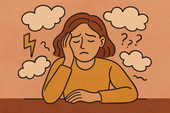
Brain Fog and Fatigue: How to Stop Blaming Yourself
Struggling with brain fog or chronic fatigue? You’re not lazy or failing. Learn how to stop blaming yourself for symptoms caused by MS or chronic illness, and start embracing a more compassionate path to healing and self-understanding.
-

Creating an Emotional Support Team You Actually Trust
Tired of feeling unsupported or misunderstood? Learn how to build an emotional support team you actually trust—with people who see you, hold space for you, and respect your boundaries, especially when living with MS or chronic illness.
-

MS, Vulnerability, and the Fear of Being Seen
Living with MS can make vulnerability feel unsafe. Learn why so many people with MS hide their struggles—and how to gently move toward authenticity, self-acceptance, and deeper connection without shame.
-
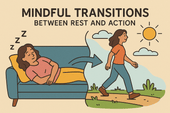
Mindful Transitions Between Rest and Action
Struggling to shift between rest and activity without guilt or overwhelm? This guide offers gentle, mindful strategies to make transitions feel more natural, intentional, and supportive of your nervous system.
-
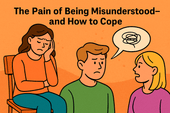
The Pain of Being Misunderstood—And How to Cope
Feeling the sting of being misunderstood? Learn why it hurts so deeply and discover practical, healing strategies to protect your truth, communicate clearly, and rebuild emotional safety when others just don’t get it.
-
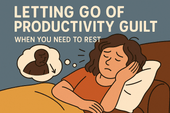
Letting Go of Productivity Guilt When You Need to Rest
Struggling with guilt every time you try to rest? Learn how to release productivity shame, understand why rest matters, and embrace a more compassionate rhythm for healing and recovery—without feeling lazy.
-

Rebuilding Energy Reserves Without Shame
-

What to Do If You Feel Emotionally Invalidated by Doctors
Feeling emotionally invalidated by your doctor can be deeply distressing. Learn how to recognize medical gaslighting, validate your own experience, and advocate for better care when you’re not being heard.
-

How to Rest Without Feeling Lazy
Rest isn’t laziness—it’s a necessary act of self-respect. Learn how to shift your mindset, let go of guilt, and embrace rest as a vital part of mental and physical well-being.
-
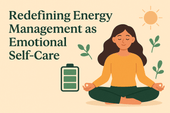
Redefining Energy Management as Emotional Self-Care
Energy isn’t just physical—it’s emotional. Learn how redefining energy management as emotional self-care can help you protect your peace, support your nervous system, and live more in tune with your true needs.
-
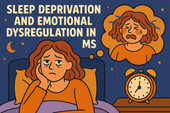
Sleep Deprivation and Emotional Dysregulation in MS
-
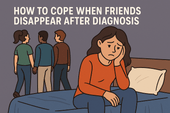
How to Cope When Friends Disappear After Diagnosis
Losing friends after a diagnosis can feel like another kind of grief. Discover why some friends disappear—and how to cope with the emotional fallout while building more supportive relationships.
-

How to Talk to Your Kids About MS Without Overwhelming Them
Struggling with how to explain MS to your kids? Learn how to talk to children of all ages about multiple sclerosis with honesty, clarity, and emotional safety—without overwhelming them.
-
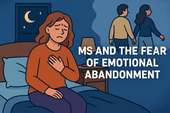
MS and the Fear of Emotional Abandonment
The fear of emotional abandonment is common for people with MS. This article explores why it happens, how it impacts your relationships, and how to create emotional safety and healing.
-
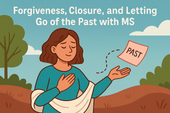
Forgiveness, Closure, and Letting Go of the Past with MS
Living with MS often brings emotional wounds from the past. Learn how forgiveness, closure, and letting go can help you heal emotionally—and reclaim peace in the present.
-
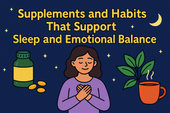
Supplements and Habits That Support Sleep and Emotional Balance
Struggling with poor sleep and emotional ups and downs? Discover calming supplements and daily habits that support deep rest and mental well-being—backed by science and easy to implement.
-
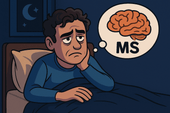
When Insomnia Feels Like Your MS Brain Won’t Turn Off
Struggling to sleep with MS? When your brain won’t shut off at night, insomnia feels relentless. Learn what causes it—and discover science-backed strategies to calm your mind and finally rest.
-

The Emotional Toll of Waking Up Tired Every Day: Why It Hurts More Than You Think
Waking up tired every day takes a deep emotional toll—from mood swings to lost motivation and self-doubt. Learn why chronic fatigue hurts more than you think and how to gently reclaim your mornings.
-
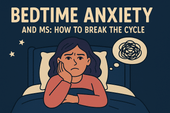
Bedtime Anxiety and MS: How to Break the Cycle
Bedtime anxiety is a common struggle for people with MS—and it’s more than just racing thoughts. Learn how MS-related stress, nervous system dysregulation, and fear of symptoms can create a cycle of sleeplessness, and discover practical, calming strategies to finally reclaim restful nights.
-
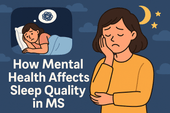
How Mental Health Affects Sleep Quality in MS: Breaking the Cycle of Fatigue and Emotional Distress
Struggling to sleep when you have MS? Discover how anxiety, depression, and neurological changes impact your rest—and what you can do to reclaim it. From CBT-I and calming supplements to lifestyle tips that support both mental health and sleep, this guide offers practical strategies for better nights.
-

Learning to Love Your Life (Even When It’s Not What You Expected)
Your life may not look how you imagined—but it’s still worth loving. Learn how to find peace, purpose, and joy in the unexpected.
-
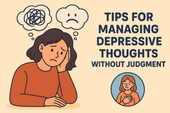
Tips for Managing Depressive Thoughts Without Judgment
Learn how to meet depressive thoughts with compassion, not shame. These gentle, research-backed tools help you manage low moods without self-judgment.
-
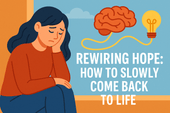
Rewiring Hope: How to Slowly Come Back to Life
Feeling emotionally numb or disconnected? Learn how to gently rebuild hope, one small sensory step and spark of life at a time.
-
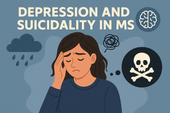
Depression and Suicidality in MS: A Conversation That Needs to Happen
Depression and suicidality in MS are real—and urgent. Learn why we must talk about it, how to spot warning signs, and where to find help and hope.
-

Finding Meaning When Life Feels Empty
Feeling disconnected or numb? Discover gentle ways to find meaning again—even in emptiness—through daily rituals, reflection, and purpose.
-
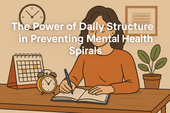
The Power of Daily Structure in Preventing Mental Health Spirals
Daily structure can prevent mental health spirals by creating safety, routine, and self-trust—especially for those with MS, depression, or anxiety.
-

Healing from Emotional Flatness with Sensory Rituals
Feeling emotionally numb or disconnected? Discover how sensory rituals can gently restore pleasure, presence, and emotional resilience.
-
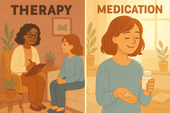
Medication vs Therapy: Treating MS-Related Depression Effectively
Explore whether therapy, medication, or both are best for treating MS-related depression. Understand what works, when—and why combination care is often ideal.
-

How to Support a Partner with MS and Depression
Learn how to support a partner living with MS and depression—practical tips, emotional tools, and ways to protect your own mental health too.
-

The Emotional Cost of Losing Your Old Life
Losing your old life to MS isn’t just about physical symptoms—it’s about grieving the identity, dreams, and freedom you once had. This article explores the emotional toll of invisible grief and how to begin healing without denying the pain.
-
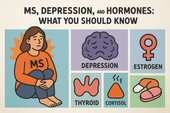
MS, Depression, and Hormones: What You Should Know
MS-related depression isn’t always just emotional—it can be hormonal. Discover how thyroid, sex, and stress hormones influence mood in MS, why women may feel worse during PMS or menopause, and what signs to look for when hormones may be driving emotional instability.
-
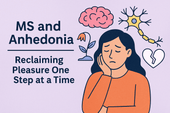
MS and Anhedonia: Reclaiming Pleasure One Step at a Time
Anhedonia—feeling emotionally flat or disconnected—is a common but misunderstood symptom of MS depression. This article explores how neuroinflammation, dopamine disruption, and fatigue can dull your sense of joy—and how small, gentle steps can help you begin to feel again.
-
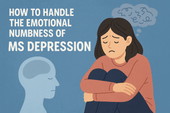
How to Handle the Emotional Numbness of MS Depression
Emotional numbness in MS depression doesn’t always look like sadness—it can feel like nothing at all. Learn why this disconnection happens, how it's tied to neuroinflammation and nervous system overload, and discover science-backed strategies to gently reconnect with your emotions.
-
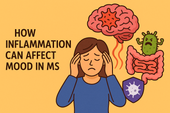
How Inflammation Can Affect Mood in MS
Mood swings and emotional numbness in MS aren’t just psychological—they can be driven by immune system inflammation. This article explores how inflammatory cytokines affect the brain, why mood changes are often biological, and what you can do to calm your nervous system from the inside out.
-
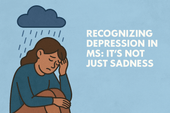
Recognizing Depression in MS: It's Not Just Sadness
Depression in multiple sclerosis (MS) is more than just sadness—it can be a neurological symptom, a side effect of inflammation, or a silent weight that masks itself as fatigue or emotional numbness. This article helps you recognize the hidden signs of MS-related depression, understand the science behind it, and explore real treatment options that support both mental and physical health.
-

Is Cryotherapy Safe for MS? Pros, Cons, and How It Compares to Cold Plunges
Cryotherapy promises quick recovery, inflammation reduction, and mood support—but is it safe for people with MS? This article breaks down the science, risks, and real-life benefits of cryotherapy for multiple sclerosis. You’ll also learn how it compares to cold plunges and which option may be better for calming flares and regulating your nervous system.
-

Can Cold Plunges Help Reduce Inflammatory Flares in MS?
Flares in multiple sclerosis (MS) are often driven by inflammation—but what if cold water could help turn down the heat? This in-depth article explores how cold plunges may help reduce flare frequency and intensity in MS by calming the immune system, lowering pro-inflammatory cytokines, and regulating the nervous system. Learn how to safely use cold exposure as part of your MS recovery routine.
-
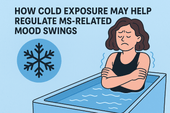
How Cold Exposure May Help Regulate MS-Related Mood Swings
Mood swings are a common but overlooked challenge in multiple sclerosis (MS). This article explores how cold exposure—like cold plunges and showers—may help regulate emotional ups and downs by calming the nervous system, reducing inflammation, and boosting mood-enhancing chemicals. Learn how to use this natural tool safely to support your mental and emotional resilience with MS.
-
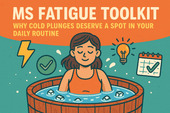
MS Fatigue Toolkit: Why Cold Plunges Deserve a Spot in Your Daily Routine
Fatigue is one of the most debilitating symptoms of multiple sclerosis (MS)—often invisible, misunderstood, and overwhelming. While no single tool can eliminate it, building a personalized fatigue management toolkit can make life more manageable. One surprising contender? Cold plunges. In this article, we explore why cold water immersion might be the refresh button your nervous system needs—and how to safely make it part of your MS fatigue routine.
-
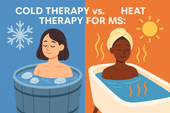
Cold Therapy vs. Heat Therapy for MS: Which One Helps More?
Managing multiple sclerosis (MS) often means navigating symptoms like fatigue, spasticity, pain, and nerve dysfunction. But when it comes to using temperature-based therapies, there’s a question many patients face: Should I be using cold or heat? In this in-depth guide, we explore the benefits, risks, and best use cases of cold therapy vs. heat therapy for MS.
-
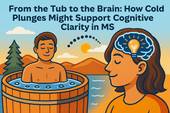
From the Tub to the Brain: How Cold Plunges Might Support Cognitive Clarity in MS
Cognitive fog is one of the most frustrating symptoms of multiple sclerosis (MS). But could cold plunges—those bracing dips into icy water—offer a surprising path to mental clarity? This article explores the emerging science behind cold exposure, brain function, and how a cold tub might help people with MS sharpen focus, lift brain fog, and reset their nervous system.
-
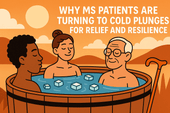
Why MS Patients Are Turning to Cold Plunges for Relief and Resilience
Cold plunges are no longer just for elite athletes and wellness influencers. A growing number of people with multiple sclerosis (MS) are turning to cold water immersion to ease symptoms, build nervous system resilience, and find calm in the chaos of chronic illness. This article explores why—and how—you might want to give it a try.
-

Cold Plunge Therapy: A Hidden Gem for People with MS?
Cold plunge therapy—once the domain of elite athletes and biohackers—is gaining attention among people with multiple sclerosis (MS). Could it help reduce inflammation, calm the nervous system, and ease MS symptoms like fatigue and spasticity? In this article, we dive deep into the science, benefits, safety, and practical application of cold plunges for MS recovery and symptom relief.
-
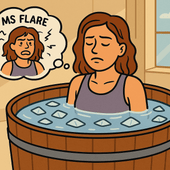
Finding Relief in the Midst of a Flare
MS flares can leave you feeling overwhelmed, exhausted, and mentally foggy. Cold water therapy is emerging as a promising tool to help reset the body and mind after a flare. This article explores how cold exposure supports recovery, calms the nervous system, and can be safely added to your daily routine.
-
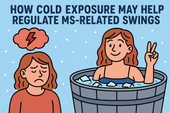
How Cold Exposure May Help Regulate MS-Related Mood Swings
Mood swings in multiple sclerosis (MS) can feel like emotional whiplash—one moment calm, the next overwhelmed, angry, or hopeless. While medications and therapy help, many people with MS are exploring natural strategies to support emotional balance. One surprising tool gaining attention? Cold exposure. In this article, we explore how cold plunges and other forms of cold therapy may regulate the nervous system, stabilize mood, and offer emotional relief for people with MS.
-
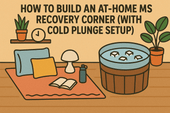
How to Build an At-Home MS Recovery Corner (with Cold Plunge Setup)
Create your personal MS recovery oasis at home—complete with a cold plunge setup. Learn how to design a space that supports healing, reduces inflammation, and helps you manage symptoms naturally.
-
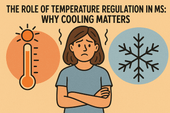
The Role of Temperature Regulation in MS: Why Cooling Matters

















































